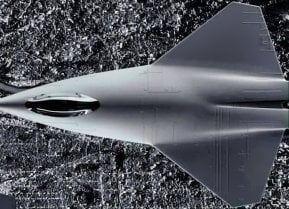The Big Interest Rate Cut: Is the Federal Reserve Too Late?
At long last, it seems that the Federal Reserve has smelt the coffee that it was keeping interest rates too high for too long for the economy's good. However, it remains to be seen whether today’s welcome and bold decision to cut interest rates by 50 basis points rather than by the more normal 25 basis points will be sufficient to stave off a recession and a regional bank crisis next year.
At long last, it seems that the Federal Reserve has smelt the coffee that it was keeping interest rates too high for too long for the economy's good. However, it remains to be seen whether today’s welcome and bold decision to cut interest rates by 50 basis points rather than by the more normal 25 basis points will be sufficient to stave off a recession and a regional bank crisis next year.
Was the Fed Too Late?
It must be remembered that monetary policy works with long and variable lags. This means that today’s interest rate cut will take at least six months to impact the economy.
One reason to think that the Fed had fallen behind the curve in cutting interest rates is that the U.S. economy already has been showing clear signs of slowing.
Job openings have been declining rapidly, employment gains have been moderating meaningfully, and the unemployment rate has increased over the past four months by 0.8 percent to its current level of 4.2 percent. Meanwhile, manufacturing output has been waning, and according to many major companies, consumers are showing signs of fatigue. It seems that the consumers have now run through their Covid check savings.
Another reason for thinking that the start of the interest rate-cutting cycle was long overdue is that inflation has moderated steadily from its July 2022 high of over 9 percent to its present level of 2.2 percent. This pace of inflation is not far from the Fed’s 2 percent inflation target. At the same time, the inflation decline has increased the real burden of the Fed’s high interest rate policy. At any given interest rate level, borrowers are more willing to take out loans for investment and consumption when the inflation rate is high than when the inflation rate is low.
Sticking to a high interest rate policy also has made little sense when a commercial property crisis has been throwing into question the ability of property developers to roll over the $1.5 trillion in commercial property loans that fall due from now until the end of next year. As office vacancy rates have soared as more work is done from home in the post-Covid world, property price declines of more than 50 percent in major US cities have become commonplace. Meanwhile, the incidence of property loan defaults has been rising. This all could have serious consequences for the regional banks that hold large amounts of commercial property loans on their books and that are nursing large mark-to market losses on their large bond portfolios as a result of high interest rates.
As if these were insufficient reasons for the Fed to have backed off its high interest rate policy earlier than today, we now have clear indications of a slowing world economy. China, the world’s second-largest economy, is now struggling to cope with its housing and credit market bubble bursting. That is already exerting downward pressure on international commodity prices, particularly oil prices. It also raises the prospect that China will export its deflation problem abroad. It might do so by attempting to export its way out of its industrial over-capacity problem by export price cuts. Meanwhile, in Europe the European Central Bank has already started cutting interest rates to support Europe’s flagging economy.
The Recession Threat
If the economy succumbs to a recession next year and we have another round of the regional bank crisis, history will not judge Jerome Powell’s Federal Reserve kindly. It will conclude that much as its backward-looking and data-dependent policy caused inflation to spike to a multi-decade high in 2022, so too did that approach cause the Fed to find itself behind the curve when recessionary conditions were in plain sight and when banking strains were building.
American Enterprise Institute senior fellow Desmond Lachman was a deputy director in the International Monetary Fund’s Policy Development and Review Department and the chief emerging-market economic strategist at Salomon Smith Barney.
Image Credit: Shutterstock.


